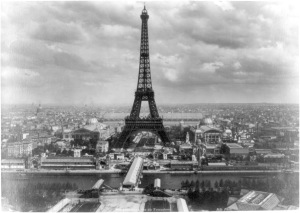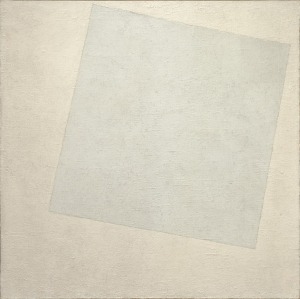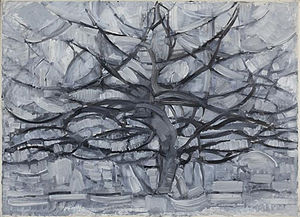New innovations in science and technology allowed society and its consequential culture and art to rocket into new, previously unexplored areas. This was a time of rejecting antiquity and tradition. Everything was new and bold and completely unheard of or never seen before. The new scientific and technological innovations and reaches of the time only helped to develop this new mindset, making older methods and traditional focuses no longer necessary and sometimes even obstructive.

The Eiffel Tower was an architectural marvel of its time. Completed in 1889 and named after Alexandre Gustave Eiffel, an engineer whose company designed and built the tower, it was the largest standing man-made structure in the world for forty-one years. Though it was meant to be taken down after the 1889 World’s Fair, the structure still stands in Paris, France today and is easily one of the world most recognizable structures. It was a modern marvel in architecture at the time, and Eiffel himself even said, “not only the art of the modern engineer, but also the century of Industry and Science in which we are living, and for which the way was prepared by the great scientific movement of the eighteenth century and by the Revolution of 1789, to which this monument will be built as an expression of France’s gratitude”(Loyrette).

Photography had made realistic art, depicting visual scenarios, rather unnecessary, as a camera could now capture all of the realistic representation in a moment. Instead, artists started looking at art differently, a major influence in the popularity of abstraction. White on White,” by Kazimir Malevich was created in 1918 and is now housed at the Museum of Modern Art in New York City. Malevich created the Russian artistic movement known as Supremacism, or “the supremacy of pure feeling or perception in the pictorial arts.” While the painting at first may seem odd, two off white squares and nothing else, this painting was revolutionary in its time. He used abstraction to help explore and rediscover the use of pure colors, which then translated into his ideologies.

“Gray Tree” by Piet Mondrian was created in 1911 and is housed at The Hague in Netherlands. This was one of Mondrian’s first explorations into cubism. With cameras now making realism obsolete, abstraction, like cubism, allowed artists to not only reinterpret the images they saw, but also redefine them from the basics up. The tree has been reduced to lines and planes, all in shades of gray. This work is largely considered his first step towards pure abstraction, as his many tree-centric paintings later on all become less and less tangible and recognizable, all while still drawing upon images from nature.
Eiffel Tower. Digital image. A Digital Archive of Architecture. Boston College, n.d. Web. 19 July 2015. <http://www.bc.edu/bc_org/avp/cas/fnart/arch/1900fair.html>.
“History of Modernism.” History of Modernism. Mdc.edu, n.d. Web. 19 July 2015. <https://www.mdc.edu/wolfson/Academic/ArtsLetters/art_philosophy/Humanities/history_of_modernism.htm>.
Loyrette, Henri (1985). Gustave Eiffel. New York: Rizzoli. p. 116. ISBN 0-8478-0631-6.
Malevich, Kazimir. White on White. 1918. Oil on canvas. Museum of Modern Art, New York City.
“MoMA.” Kazimir Malevich. Suprematist Composition: White on White. 1918. N.p
Mondrian’s painting stuck me first as sort of oddly saddening with interesting curvature dynamics (not exactly a cubism style i would have expected), but after seeing a greater selection of the evolution of his work the style is definitely an early step to his famous Composition with Red, Blue, Yellow. I found it interesting that his earlier works are very vibrant, and intricately detailed, whereas his more profound pieces are filled with straight lines, black and whites, and primary colors. I feel that this progression can be compared to innovation with science and technology with its elemental breakdown of art which in terms of science can be interpreted as the discovery of finer scales in which we can study things, in turn finding the simplistic beauty. Thanks for the abstract contemplation tour!
http://emptyeasel.com/2007/04/17/piet-mondrian-the-evolution-of-pure-abstract-paintings/
Short progression of his work
LikeLike
The “Gray Tree” is interesting at first with all the gray I thought it was sad. But after looking at the painting for some time I began to notice the background with the different dimensions of white and gray I thought was a softer side to this harsh painting. The branches I also thought were interesting because they reach out from the center of the painting to the far edges of the painting. Giving the illusion of a curved looked to the painting. The Eiffel Tower is my all time favorite structure in the world! It has always captured my fascination and was largely the excuse I used for travel… I’m so happy that the French decided not to take the Eiffel Tower down although the French think it is an eye sore. Every 7 years the Eiffel Tower gets a fresh coat of paint it takes 60 ton’s of paint to get the Eiffel Tower looking like new again. Here is a link to Eiffel Tower website were the rest of the products needed to paint the Eiffel Tower are listed. This is truly an undertaking and a labor of love!
http://www.toureiffel.paris/en/everything-about-the-tower/themed-files/97.html
LikeLike